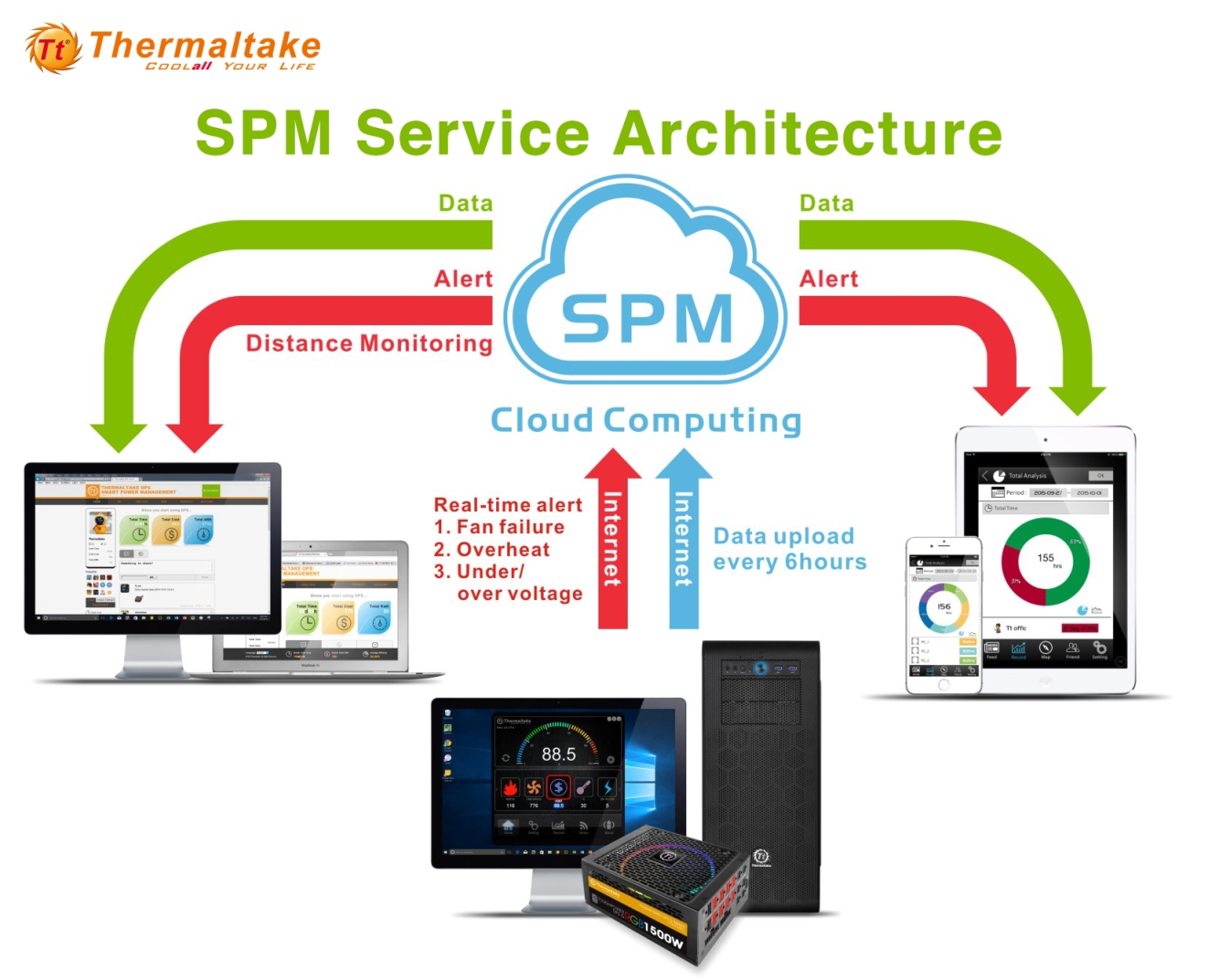Thermaltake's SPM Can Now Remotely Shut Down Your System
Thermaltake's DPS G PSUs are supported by the Smart Power Management (SPM) platform that offers many interesting functions. The newest is the ability to remotely shutdown the PSU either immediately, or based on a schedule.
We have already analyzed the SPM platform along with the DPS G PC App 2.0 in our recent Thermaltake Toughpower DPS G 1200W PSU review. We cannot say that the DPSApp managed to impress us, mostly because of some annoying bugs that we found, but still, the app offers a significant amount of information, and on top of that, it allows you to change the fan profile, albeit with a limited number of options (only three).
Thermaltake announced the addition of a new function to the SPM platform: the ability to remotely shut down or restart a system that's equipped with a DPS G unit. Moreover, you can now remotely schedule a shutdown of your system either through the SPM Cloud service or through the corresponding mobile application.
According to Thermaltake, this new function enhances the security protection of a system because once you receive a warning alert when the DPSApp detects a problem in the PSU's operation, you have the ability to remotely turn off the system in order to avoid further damage. An interesting fact is that you can control multiple DPS G units simultaneously through the SPM platform. This will surely save you some time in case you want to turn off or schedule a shutdown of multiple systems.
A variety of software applications offer a remote shutdown option, so naturally Thermaltake highlighted the combination of a warning alert with the option to shut down through the SPM service. However, it would be far more interesting if Thermaltake also offered a remote wake option to its digital PSUs. Such a function, though, also needs hardware modifications, besides code. During last year's Computex (2015) we saw a similar PSU (called Pi) announced by Cryorig, with a release date pointing to this summer. However, most likely this project has been abandoned or stalled because we haven't hear anything new about it.
On Thermaltake's site, you will find an interesting video that shows the shutdown/restart function of the SPM platform in action.


Follow us on Facebook, Google+, RSS, Twitter and YouTube.
Get Tom's Hardware's best news and in-depth reviews, straight to your inbox.

Aris Mpitziopoulos is a contributing editor at Tom's Hardware, covering PSUs.
-
Kewlx25 Having worked with computers for 25 year and having worked in IT, I cannot fathom the reason for this feature.Reply -
Gashole711 I agree with kewlx25. If the PSU detects an issue with its operation, it should take itself down. Not wait for someone to confirm it.Reply -
Nuckles_56 Well, I can't wait for the hackers to break into the service and shut down all the computers with these power suppliesReply -
jimmysmitty Reply18169236 said:Having worked with computers for 25 year and having worked in IT, I cannot fathom the reason for this feature.
Looks similar to a Dells iDRAC which in IT is something that I would not ever live without.
However for my home PC, unless I have a business grade firewall (doubt I plan to spend that much money for home use) then yea I see no real purpose of it. -
mavikt Sounds like something an IT department would use; killing vampires at night. A good thing in general, but I put mine in S3 STR when I leave. Works fine, but I also remove the ethernet cable, since they (IT) love to wake the computers up, no dice, and all my windows gets scrambled in the process (got one very old monitor (out of the two)). Sadly I often see computer 'fully' powered on, at the lock screen, when I leave. Then I usually turn the monitor off to save some power. I think this is actually a big deal. Killing vampires is good. I know I'm a vampire too, but there are differences in hell!Reply
